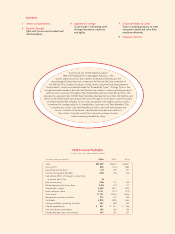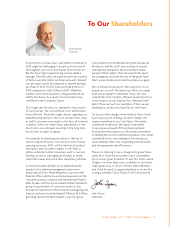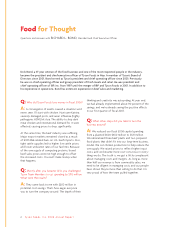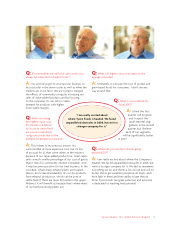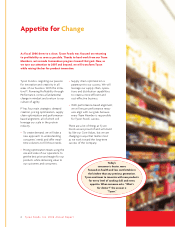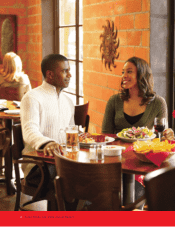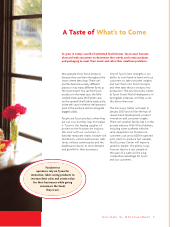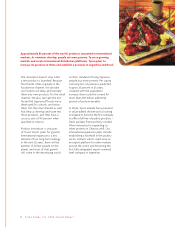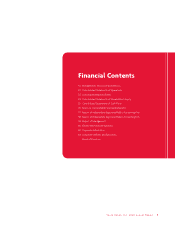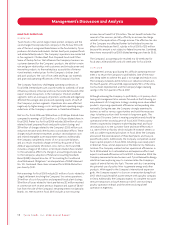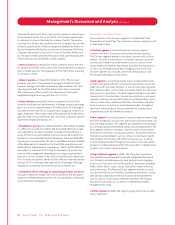Tyson Foods 2006 Annual Report Download - page 4
Download and view the complete annual report
Please find page 4 of the 2006 Tyson Foods annual report below. You can navigate through the pages in the report by either clicking on the pages listed below, or by using the keyword search tool below to find specific information within the annual report.
Dick Bond, a 37-year veteran of the food business and one of the most respected people in the industry,
became the president and chief executive officer of Tyson Foods in May. A member of Tyson’s Board of
Directors since 2001, Bond served as Tyson’s president and chief operating officer since 2003. Previously
he was co-chief operating officer and group president of fresh meats and retail. He was president and
chief operating officer of IBP, inc. from 1997 until the merger of IBP and Tyson Foods in 2001. In addition to
his experience in operations, Bond has extensive experience in beef sales and marketing.
2Ty s on Foods, Inc. 2006 Annual Report
Q:Why did Tyson Foods lose money in fiscal 2006?
A:A convergence of events caused a situation we’d
never seen. I’ll start with chicken. Hurricane Katrina
severely damaged ports, and avian influenza (highly
pathogenic H5N1) hit Asia. The ability to ship dark
meat chicken and international demand for it were
affected, causing prices to drop significantly.
At the same time, the beef industry was suffering.
Major export markets remained closed as a result
of 2003 BSE-related bans on U.S. beef imports. Also,
tight cattle supplies led to higher live cattle prices
and lower utilization rates of our facilities. Because
of the oversupply of competing proteins, boxed
beef sales prices were not high enough to offset
the increased costs. You can’t make money when
that happens.
Q:Shortly after you became CEO, you challenged
Tyson Team Members to cut spending by $110 million.
What were the results?
A:They came back to me with $200 million in
potential cost savings. That’s how eager everyone
was to turn the company around. The depth of their
thinking and creativity was astounding. At year end,
we had already implemented about 90 percent of the
savings, and we’re already seeing the positive effects
in our first quarter of fiscal 2007.
Q:What other steps did you take to turn the
business around?
A:We reduced our fiscal 2006 capital spending
from a planned $600-$650 million to $531 million.
We rationalized three beef plants and two prepared
food plants that didn’t fit into our long-term business
model. We cut chicken production to help reduce the
oversupply. We raised prices to reflect higher input
costs, and we became more cost-conscious in every-
thing we do. The truth is, we got a little complacent
about managing costs and margins. As long as more
than half our revenue is from commodity sales, we
need to be diligent in managing costs, and our people
have shown they’re more than willing to do that. I’m
very proud of how the team pulled together.
Food for Thought
Questions and Answers with RICHARD L. BOND,President and Chief Executive Officer


